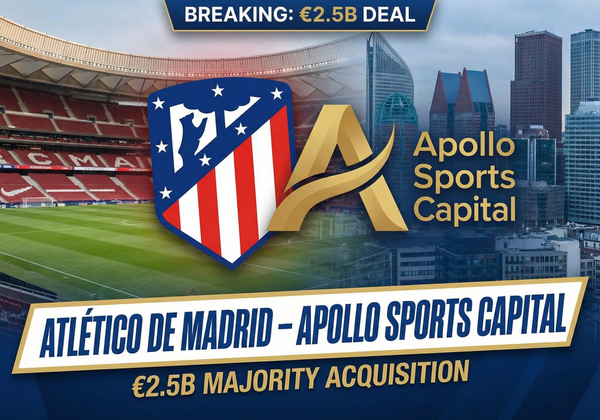Direct Listing vs. IPO
For a private company with aspirations of going public, the decision of how to access the stock market is one of the most critical strategic choices it will make.
Traditionally, the Initial Public Offering (IPO) has been the primary method of going public. However, in recent years, the Direct Listing (DL) has emerged as a compelling alternative, challenging the long-held conventions of public market debuts.
The Initial Public Offering (IPO)
An IPO is a primary offering where a private company sells newly issued shares to the public for the first time. This process is typically underwritten by investment banks who act as intermediaries, helping the company price the shares, market them to investors, and manage the offering process.
How it Works (Simplified):
- Select Underwriters: The company hires one or more investment banks (underwriters) to manage the IPO.
- Due Diligence & Registration: Underwriters conduct extensive due diligence, and the company prepares a detailed S-1 registration statement with the SEC.
- Roadshow: Company management and underwriters present to institutional investors, drumming up interest and building a book of demand.
- Pricing: Based on demand, market conditions, and valuation, the underwriters and company agree on an IPO price.
- Shares Issued & Trading: Shares are allocated to investors, and trading commences on a public exchange.
Key Advantages of an IPO:
- Capital Raising: The primary benefit is raising a substantial amount of new capital for the company, which can be used for growth, acquisitions, or debt repayment.
- Price Discovery & Stability: Underwriters conduct a thorough roadshow and book-building process, aiming to achieve an optimal offering price and often providing price stabilization support in early trading.
- Credibility & Visibility: The rigorous IPO process and the backing of reputable investment banks can enhance a company's credibility and public profile.
- Broad Investor Base: IPOs aim to attract a diverse range of institutional and retail investors.
Key Disadvantages of an IPO:
- High Fees: Underwriters charge significant fees (typically 3-7% of the gross proceeds), making it an expensive process.
- Dilution: Issuing new shares dilutes the ownership stake of existing shareholders.
- Pop or Underpricing: IPOs are often intentionally underpriced to ensure strong initial trading performance, leaving money on the table for the company.
- Lock-up Periods: Existing shareholders are typically subject to lock-up agreements, preventing them from selling shares for a period (e.g., 90-180 days) after the IPO.
- Time & Complexity: The IPO process is lengthy, arduous, and requires significant management time and resources.
The Direct Listing (DL)
In a direct listing, a company lists its existing shares directly on a stock exchange, allowing existing shareholders (insiders, early investors) to sell their shares to the public without the need for underwriters to sell new shares. The company itself typically does not raise new capital directly through the listing process (operates within the secondary market).
How it Works (Simplified):
- Select Exchange & Advisors: The company chooses a stock exchange and engages financial advisors (not traditional underwriters) for guidance.
- Registration & Marketing: Files an S-1 registration statement with the SEC, and the company or its advisors may engage in some marketing to generate interest.
- No Roadshow or Book-Building: There's no traditional roadshow or fixed IPO price. Trading simply begins based on buy and sell orders from the market.
- Shares Trade: Existing shares become publicly tradable.
Key Advantages of a Direct Listing:
- Lower Fees: Significantly reduces or eliminates underwriting fees, leading to substantial cost savings.
- No Dilution: The company doesn't issue new shares, so there's no dilution of existing shareholders' ownership.
- Open Price Discovery: The market determines the opening price based purely on supply and demand, potentially leading to a more fair valuation from day one, without the IPO pop that benefits initial buyers at the expense of existing shareholders.
- No Lock-up Periods (Often): Existing shareholders may have immediate liquidity, as there are often no formal lock-up agreements (though they may choose to stagger sales).
- Faster Process: Can be quicker to execute than an IPO, though regulatory hurdles remain.
Key Disadvantages of a Direct Listing:
- No New Capital Raised: The primary drawback for many companies is that a traditional DL doesn't raise fresh capital for the company's balance sheet.
- Price Volatility Risk: Without underwriter support and price stabilization mechanisms, the stock price can be more volatile in early trading.
- Less Marketing & Investor Education: Without a traditional roadshow, it can be harder to generate buzz and educate a broad base of new investors about the company's story.
- Requires Existing Liquidity: Best suited for companies with a well-known brand and a significant existing shareholder base looking for an exit.
- Limited Investor Base: Might primarily attract institutional investors and less retail participation initially.
Key Components When Going Public
Whether a company chooses a traditional Initial Public Offering (IPO) or a Direct Listing, several key components come into play that significantly impact the market dynamics and the experience for early investors and the broader public.
Understanding these elements—namely, the float, the percentage of shares in the float, and lock-up agreements—is crucial for anyone looking to invest in newly public companies or to grasp the mechanics of market debuts.
Float
The float refers to the number of shares of a company's stock that are actively available for trading in the open market. It's essentially the supply of shares that investors can buy and sell on a given day. This figure is distinct from the total number of outstanding shares, as it excludes shares that are restricted, held by insiders (founders, executives, employees), or subject to long-term holding agreements.
For example, if a company has 100 million shares outstanding but 60 million are held by insiders under restriction, its float would be 40 million shares. A smaller float can often lead to higher price volatility, as there are fewer shares available to meet demand. Conversely, a larger float might suggest more liquidity and potentially less price fluctuation.
Percentage of Shares Float
The percentage of shares float is simply the float expressed as a percentage of the total outstanding shares. This metric provides a clearer picture of how much of the company's equity is truly liquid and in the hands of the public.
To calculate it:
Percentage of Shares Float = (Float / Total Outstanding Shares) × 100%
A low percentage of shares float (e.g., 10-20%) indicates that a significant portion of the company is still held by insiders or early investors, meaning a relatively small supply is available for public trading. This can sometimes lead to sharp price movements if demand is high, as the limited supply can be quickly absorbed. Conversely, a higher percentage (e.g., 40% or more) suggests greater public ownership and potentially more stable trading patterns once the initial excitement settles.
Lock-up Period
A lock-up period is a contractual restriction that prevents insiders (such as company executives, employees, and early investors) from selling their shares for a specified period after a company goes public. These agreements are a standard feature of IPOs, though their application can differ in direct listings.
The primary purpose of a lock-up period is to prevent a sudden flood of shares onto the market shortly after the IPO. Without a lock-up, insiders might be tempted to cash out immediately, leading to a massive increase in supply that could depress the stock price and undermine investor confidence.
Typical lock-up periods range from 90 to 180 days, though they can vary. Once the lock-up period expires, a significant number of additional shares may become available for trading. This event, often referred to as the lock-up expiry, can sometimes lead to increased selling pressure and a temporary dip in the stock price as insiders diversify their holdings or realize gains. Investors often closely monitor lock-up expiry dates as they can present both risks and opportunities.
In direct listings, the concept of a traditional lock-up period is often less rigid or non-existent for pre-existing shareholders, as the primary goal is not to raise new capital but to allow existing shares to be traded. However, individual agreements or company policies might still impose certain restrictions on insider sales.
The Big Players: Institutional Investors
Institutional investors are the backbone of the IPO market. They are entities that invest large sums of money on behalf of others and are typically allocated a significant portion of the IPO shares. Their participation is crucial for a successful IPO, as their large orders provide stability and validation. Here are the main types:
- Mutual Funds: These funds pool money from many investors to invest in securities. Mutual fund managers are often key participants in IPOs, as they are constantly looking for new investment opportunities to generate returns for their shareholders.
- Hedge Funds: These are privately managed investment funds that use a variety of strategies to generate returns. Hedge funds are often more aggressive investors and may participate in IPOs with the goal of making a quick profit on the first day of trading.
- Pension Funds: These funds manage the retirement savings of employees. Pension funds are typically long-term investors, looking for stable, well-run companies that can provide consistent returns over many years.
- Insurance Companies: These companies invest premiums paid by their policyholders to generate returns that can be used to pay out future claims. They, like pension funds, tend to be long-term, conservative investors.
- Anchor Investors: A specific category of institutional investors, anchor investors are typically large, well-regarded institutions that commit to buying a substantial portion of an IPO before it's even opened to the public. Their early commitment provides a strong signal of confidence, often attracting other investors. They are usually subject to a lock-in period, during which they cannot sell their shares, which helps to stabilize the stock price after the IPO.
The Underwriting Process: The Engine of the IPO
The underwriting process is at the heart of an IPO. It's the mechanism by which the investment banks take on the risk of bringing a new stock to market. Here’s a closer look at the key elements:
- Firm Commitment vs. Best Efforts: The most common and desirable type of underwriting agreement is a firm commitment. In this arrangement, the underwriters agree to purchase the entire stock offering from the company at a set price, and then resell it to the public. This means the underwriters bear the financial risk if they can't sell all the shares. In a best-efforts arrangement, the underwriters only agree to use their best efforts to sell the shares, acting as the company's agent. The company bears the risk if the offering is not fully subscribed.
- The Syndicate: To spread the risk and reach a broader investor base, a single lead underwriter often assembles a syndicate of other investment banks and broker-dealers. This group works together to market and distribute the shares.
- The Underwriting Discount: For their services, underwriters are compensated with an underwriting discount, which is the difference between the price they pay the company for the shares and the public offering price. This fee can be a significant cost for the company, often around 7% of the total IPO proceeds.
The IPO Price vs. the Public Trading Price
A common point of confusion for many new investors is the difference between the IPO price and the price at which the stock begins trading on the public exchange. While they are closely related, they are not the same, and the difference can be substantial. Understanding this dynamic is key to comprehending the entire IPO process.
The IPO price is the fixed price at which the company and its underwriters sell the shares in the primary offering. This is the price paid by the institutional investors who received allocations through the book-building process. This price is determined a day or two before the stock begins trading and is the amount of money the company receives for each share it sells.
The public trading price, on the other hand, is the price at which the stock opens and trades on the first day in the secondary market. This price is determined by the forces of supply and demand from a much broader pool of investors—including retail investors, hedge funds that didn't get an allocation, and other market participants.
Here's why these two prices can be so different:
- The Underwriting Discount: The most direct reason for the difference is the underwriting discount. As mentioned earlier, the underwriters purchase the shares from the company at a slight discount to the IPO price. This discount, typically around 7%, is their fee for managing the entire process and taking on the risk of the offering. So, the price the company receives is actually lower than the price institutional investors paid.
- Strategic Underpricing (Leaving Money on the Table): A key goal for underwriters is to ensure the IPO is successful and that all shares are sold. To generate strong demand and a pop on the first day of trading, they often intentionally price the IPO a bit below what they believe to be the company's true value. This practice, known as underpricing, is a strategic move to create a positive perception and reward the institutional investors who took the risk of investing in a new company. This money left on the table for investors is a powerful incentive and helps build goodwill for future IPOs.
- Market Hype and Investor Demand: The roadshow is designed to generate buzz and excitement. If the company is a well-known brand or a hot new tech startup, the demand for shares can far outstrip the supply. This high demand, especially from retail investors who were not part of the initial allocation, can push the opening price significantly higher than the IPO price. The opening price becomes a true reflection of the market's collective judgment on the company's value at that moment.
- The Greed vs. Fear Balance: The underwriters walk a fine line when setting the IPO price. If they price it too high, the shares might not sell, and the offering could be a failure. This would be a disaster for both the company and the underwriters. Conversely, if they price it too low, the company raises less capital than it could have, and the original shareholders miss out on potential value. The opening price on the public exchange is the market's immediate verdict on whether that balance was struck correctly. A huge first-day pop can be seen as a sign of successful underpricing, but also as a missed opportunity for the company to raise more capital.
In essence, the IPO price is a negotiated price between the company and a select group of institutional investors, while the public trading price is a discovery process where the open market determines the stock's true value based on supply and demand.
This often results in a significant difference on the first day, a phenomenon that is a defining characteristic of the IPO market.
Which Path?
The choice between an IPO and a Direct Listing hinges on a company's specific needs and objectives:
- Choose an IPO if:
- You need to raise substantial new capital to fund growth, acquisitions, or pay down debt.
- You prefer the traditional, more controlled price discovery and stabilization process offered by underwriters.
- You want the comprehensive marketing and broad investor reach provided by an underwriting syndicate.
- Consider a Direct Listing if:
- You don't need to raise new capital immediately, or prefer to raise it later through other means (e.g., a secondary offering).
- You want to avoid significant underwriting fees and dilution.
- You have a strong brand, significant existing shareholder base, and believe the market will fairly value your shares without external price support.
- You want to provide immediate liquidity to existing shareholders without lock-up periods.
| Feature | IPO | Direct Listing |
|---|---|---|
| Capital Raised | ✅ New funds via new shares | ❌ No new capital |
| Costs | 💸 High (5–7% underwriting fees) | 💰 Lower (minimal banker fees) |
| Pricing Control | Set by underwriters | Market-driven on Day 1 |
| Lock-up Periods | 90–180 days | None or shorter |
| Volatility | Moderate (underwriters stabilize) | High (no price support) |
| Dilution | Yes (new shares issued) | No |
| Time Commitment | 6–12 months | Faster process (3–6 months) |
The Evolving Landscape
The public market landscape is continuously evolving. We've seen prominent companies like Spotify, Slack, Coinbase, and Palantir opt for direct listings, demonstrating its viability for well-established, well-capitalized firms.
Furthermore, regulatory bodies are exploring ways to make direct listings more flexible, including allowing companies to raise new capital directly within the listing process.



